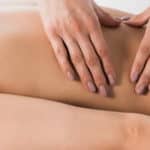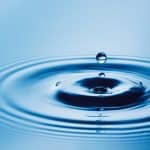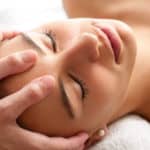Autumn brings back-to-school sales, a chill in the air and plenty of viruses to avoid. As a service professional with your door open to the public, viruses both mild and nasty can make their way into your healing space. Whether you provide bodywork to teachers or parents of runny-nosed children, receive a sneezing client on your treatment table or have someone under the weather waiting for a client in your reception area, autumn’s germs are everywhere. Keep yourself and clients healthy by learning to foster an optimal healing environment. Minimization of virus transmission and elimination of airborne germs will keep your massage practice from perpetuating the common cold.
Practitioner Resistance
Perhaps the most important component of a healthy environment is maintaining the bodyworker’s immune system. Someone who is ‘burning the candle at both ends’ will lack the strength necessary to fight off a communicable illness. Contributors include:
- Eating irregularly
- Consuming foods that lack nutritional value
- Drinking alcohol and smoking
- Working long hours
- Getting insufficient sleep
- Lacking movement or exercise
- Sacrificing fun and joy
Attention to general lifestyle factors will not only make a person feel better, but will also increase their immune system’s strength. Such factors include:
- Eating regular, healthy and nutritionally balanced meals.
- Supplementing diet with vitamins, minerals, antioxidants and essential fatty acids. Vitamin C, Zinc and Echinacea are all believed to strengthen one’s immunity to colds and the flu.
- Saving vices (alcohol and sugar consumption) as occasional treats.
- Quitting smoking. Tobacco smoking has been linked with the weakening of the immune system. Smokers on average take 25% more sick days a year than non-smokers.
- Setting limits on work. This will leave you more time for rest, relaxation, fun and sleep.
- Adhering to a regular exercise routine. Research proves that regular exercise strengthens the immune system.
The stronger a practitioner’s immune system, the less likely they are to act as a viral conduit from one client to the next.
Germ-free Environment
Excellent hygiene practices are crucial for minimizing contagion. This includes:
- Changing linens between every client
- Doorknob cleaning
- Scrupulous hand washing
- Air purification
Changing linens and cleaning doorknobs
While most practitioners understand the importance of linen changes, it is easy to become lax with this crucial practice. Even though a client appears to be perfectly healthy and may leave the massage table without any evidence of their previous session, the linens must be clean and fresh for each person. Since viral particles are undetectable to the naked eye, failure to provide fresh linens can easily result in viral transmission.
Doorknob germs are a prime suspect in the transmission of the common cold. An easy tip to minimize viral spread during cold and flu season is to keep some antimicrobial wipes handy, and wipe down doorknobs between clients.
Hand washing
To avoid catching a client’s cold; bodyworkers must wash their hands thoroughly and regularly, as well as refrain from touching their own face. If the therapist touches the client’s face (by performing any type of facial massage), be sure to follow immediately with thorough hand washing. Research has demonstrated that anti-bacterial soaps have no effect on the cold virus – it is the mechanical action of hand washing that removes the virus particles. In 2002, the Centers for Disease Control and Prevention recommended alcohol based hand gels as an effective method for reducing infectious viruses on the hands. However, subsequent research supports findings that the physical rubbing together of hands is the primary cleanser.
The following is a highly recommended hand washing protocol:
- Turn on water to a moderate flow and wet hands.
- Place liquid soap in hands. While plain soap is fine for routine hand washing, an antimicrobial soap is advised for use with an immune compromised client – or in the event of a blood or suspicious body fluid exposure.
- Rub hands briskly for 30 seconds, including knuckles, between fingers and under nails. Wash up to forearms.
- Rinse hands in a downward motion, from forearms to fingertips.
- Dry hands completely with paper towel.
Disinfecting the air
Since viruses are primarily transmitted from person to person via cough or sneeze droplets, neutralizing airborne germs can prevent viral inhalation. While some practitioners may rely on aerosol spray disinfectants, many people (as well as the environment) are sensitive to these products. A natural, yet effective alternative is releasing an antimicrobial essential oil into the air.
When high quality essential oils are chosen, they can possess significant healing properties. Three essential oils typically relied on for their antimicrobial properties are:
- Grapefruit
- Orange
- Tea tree
An easy method to disinfect the air is to use a spray bottle. Add 10 drops of a chosen essential oil to two ounces of water and spray the air in between clients. Another method to use in your healing space is an air diffuser. Use approximately six drops in a diffuser to maintain a continual dispersal of essential oil in the air.
Grapefruit and orange are more desirable for most healing spaces because the aroma of tea tree may be too strong for client appreciation. Tea tree essential oil dispersal into the air is best at the end of the day, to rid your office of any remaining airborne germs.
Maintaining your own immune system, practicing excellent professional hygiene and using aromatherapy to keep your environment germ-free are all ideal methods for making your healing space a retreat from autumn’s cold and flu season.















